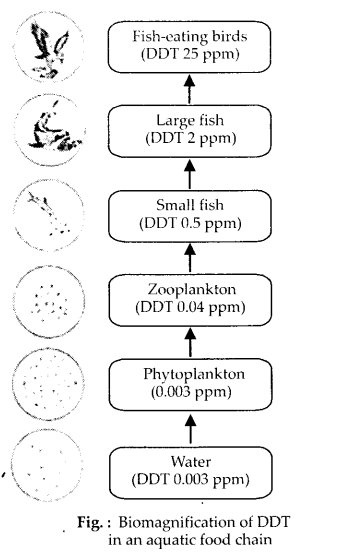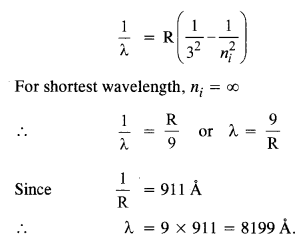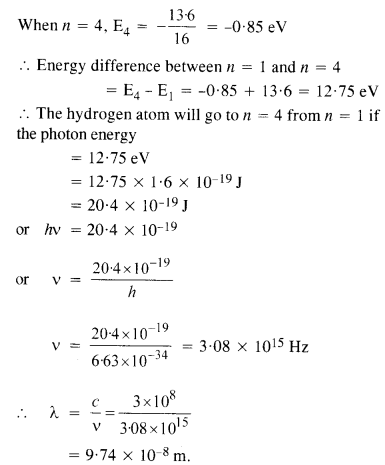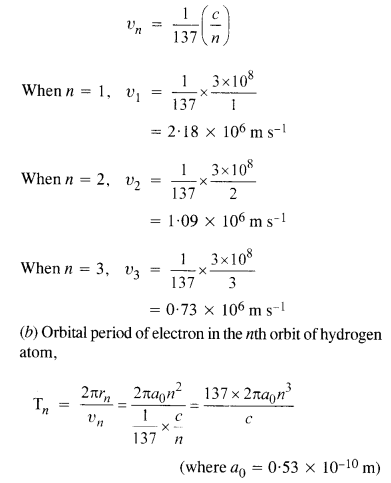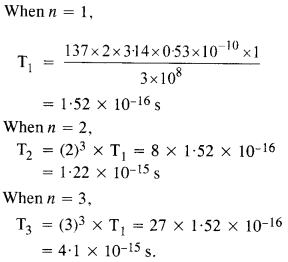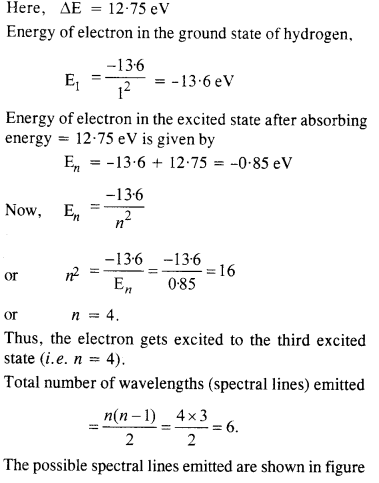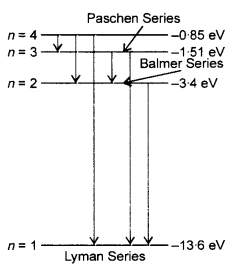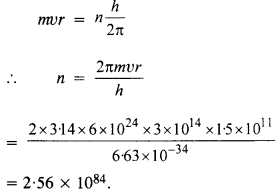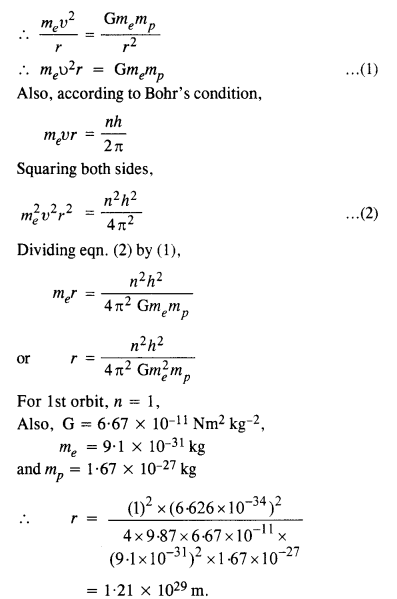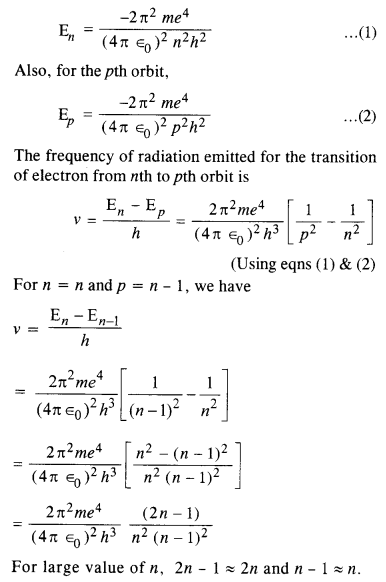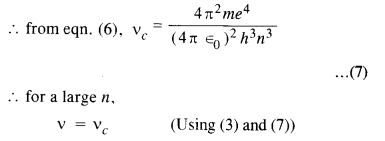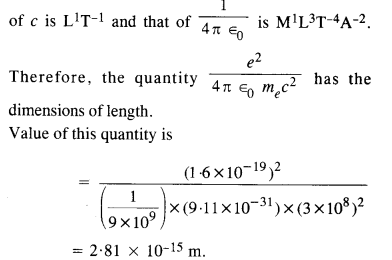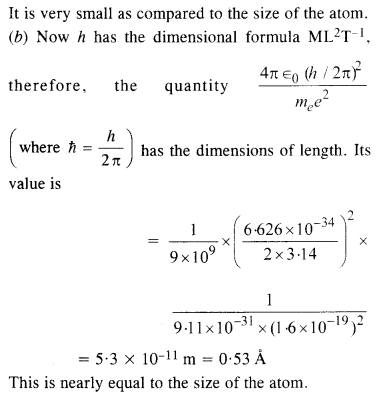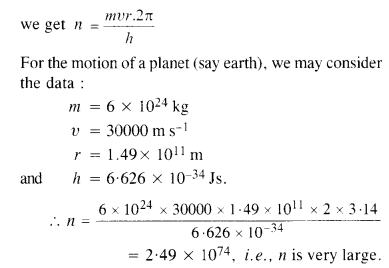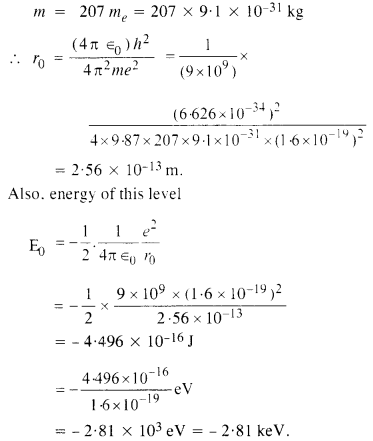
This grammar section explains English Grammar in a clear and simple way. There are example sentences to show how the language is used. NCERT Solutions for Class 12 English will help you to write better answers in your Class 12 exams. Because the Solutions are solved by subject matter experts.
Read all classes unseen passage with questions and answers in English
Unseen Passage for Class 12 Literature With Answers PDF 2020
English Comprehension Passages with Questions and Answers for Grade 12
♦ Solved Passages:
I. Read the passage given below and answer the questions that follow. (12 marks)
1. You never saw such a commotion in all your life as when my Uncle Podger undertook to do a job. A picture would be waiting to be put up and Uncle Podger would say: ‘Oh, you leave that to me. Don’t you worry about that? I’ll do all that. Now you go and get me my hammer. You bring me the rule Tom, and I shall want the step – ladder and I had better have a kitchen chair too and Jim, you run round to Mr. Goggles and tell him Pa’s kind regards and hopes his leg’s better and will he lend him his spirit level? And don’t you go, Martha, because I shall want somebody to hold me the light, and when the girl comes back, she must go out again for a bit of picture – cord and Tom you come here I shall want you to hand me up the picture.’
2. And then he would lift up the picture and drop it and it would come out of the frame, and he would try to save the glass and cut himself and then he would spring round the room, looking for his handkerchief. He could not find his handkerchief, because it was in the pocket of the coat he had taken off, and he did not know where he had put the coat. The entire house had to leave off looking for his tools and start looking for his coat, while he would dance round and hinder them. ‘Doesn’t anybody in the whole house knows where my coat is? Six of you! You can’t find a coat!’ Then he’d get up and find that he had been sitting on it, and would call out. ‘Oh, you can give it up! I’ve found it myself now.’
3. When half an hour had been spent in tying up his finger, and a new glass had been got, and the tools, and the ladder, and the chair, and the candle had been brought, he would have another go, the whole family, including the girl and the charwoman, standing round in a semi-circle, ready to help.
4. Two people would have to hold him there, and a fourth would hand him a nail, and a fifth would pass him up the hammer, and he would take hold of the nail, and drop it. “There!’ he would say, in an injured tone, ‘now the nail’s gone’.
5. We would all have to go down on our knees and grovel for it, while he would stand on the chair, and grunt, and want to know if he was to be kept there all the evening. The nail would be found at last, but by that time he would have lost the hammer. “Where’s the hammer? Seven of you gaping round there and you don’t know what I did with the hammer?’
6. We would find the hammer and then he would have lost sight of the mark he had made on the wall. Each of us had to get up on the chair beside him and see if we could find it, and we would each discover it in a different place and he would call us all fools. And he would take the rule, and re-measure and find that he wanted half thirty – one and three-eighths inches from the corner, and would try to do it in his head, and go mad. And we would all try to do it in our heads and all arrive at different results, and the original number would be forgotten, and Uncle Podger would have to measure it again.
7. He would use a bit of string this time and at the critical moment, when he was leaning over the chair at an angle of forty – five, and trying to reach a point on the wall, the string would slip, and down he would slide on the piano, a really fine musical effect being produced by the suddenness with which his head and body struck all the notes at the same time.
8. At last, Uncle Podger would get the spot fixed again and put the point of the nail on it with his left hand and take the hammer in his right hand. And, with the first blow, he would smash his thumb, and drop the hammer with a yell, on somebody’s toes.
9. Aunt Maria would observe that the next time Uncle Podger was going to hammer a nail into the wall;. she would go and spend a week with her mother while it was being done. ‘You women you make such a fuss over everything,’ Uncle Podger would reply. “I like doing a little job of this sort.’
Adapted from Three Men in a Boat (To Say Nothing of the Dog) by Jerome K. Jerome
1.1 Choose the correct option.
(a) A charwoman is a woman ……………………………..
i. who cleans houses
ii. who is the head of a committee
iii. none of the above
(b) When the hammer had finally been found, Uncle Podger would ……………………………..
i. have lost sight of the mark he had made on the wall
ii. have lost the nail
iii. fix the nail on the wall
1.2 On the basis of your reading of the passage, answer the following questions.
(a) How did Uncle Podger prepare for the task that he was going to undertake?
(b) Why was looking for the handkerchief a tedious task?
(c) Uncle Podger’s family was not good at mental maths. Give evidence.
(d) What was Aunt Maria’s reaction to Uncle Podger’s hanging the picture?
(e) Give two words to describe Uncle Podger.
1.3 Pick out the words from the passage which mean the same as the following.
(a) tumult (para 1)
(b) abruptness (para 7)
II. Read the following passage carefully. (12 marks)
1. That large animals require luxuriant vegetation has been a general assumption which has passed from one work to another, but I do not hesitate to say that it is completely false and that it has vitiated the reasoning of geologists on some points of great interest in the ancient history of the world. The prejudice has probably been derived from India, and the Indian islands, where troops of elephants, noble forests, and impenetrable jungles are associated together in everyone’s mind. If, however, we refer to any work of travels through the southern parts of Africa, we shall find allusions in almost every page either to the desert character of the country or to the numbers of large animals inhabiting it. The same thing is rendered evident by the many engravings which have been published in various parts of the interior.
2. Dr Andrew Smith, who has lately succeeded in passing the Tropic of Capricorn, informs me that taking into consideration the whole of the southern part of Africa, there can be no doubt of its being a sterile country. On the southern coasts, there are some fine forests, but with these exceptions, the traveller may pass for days together through open plains, covered by poor and scanty vegetation. Now, if we look to the animals inhabiting these wide plains, we shall find their numbers extraordinarily great, and their bulk immense.
3. It may be supposed that although the species are numerous, the individuals of each kind are few. By the kindness of Dr Smith, I am enabled to show that the case is very different. He informs me that in one day’s march with the bullock-wagons, he saw, without wandering to any great distance on either side, between one-hundred and one-hundred and fifty rhinoceroses—the same day he saw several herds of giraffes, amounting together to nearly a hundred.
4. At the distance of a little more than one hour’s march from their place of encampment on the previous night, his party actually killed eight hippopotamuses at one spot and saw many more. In this same river, there were likewise crocodiles. Of course, it was a case quite extraordinary to see so many great animals crowded together, but it evidently proves that they must exist in great numbers. Dr Smith describes that the country passed through that day as ‘being thinly covered with grass, and bushes about four feet high, and still more thinly with mimosa trees’.
5. Besides these large animals, anyone the least acquainted with the natural history of the Cape has read of the herds of antelopes, which can be compared only with the flocks of migratory birds. The numbers indeed of the lion, panther, and hyena, and the multitude of birds of prey, plainly speak of the abundance of the smaller quadrupeds. One evening, seven lions were counted at the same time prowling round Dr Smith’s encampment. .As this, an able naturalist remarked to me, each day the carnage in Southern Africa must indeed be terrific! I confess that it is truly surprising how such a number of animals can find support in a country producing so little food.
6. The larger quadrupeds no doubt roam over wide tracts in search of it; and their food chiefly consists of underwood, which probably contains many nutrients in a small bulk. Dr. Smith also informs me that the vegetation has a rapid growth; no sooner is a part consumed, than its place is supplied by a fresh stock. There can be no doubt, however, that our ideas respecting the apparent amount of food necessary for the support of large quadrupeds are much exaggerated. The belief that where large quadrupeds exist, the vegetation must necessarily be luxuriant is more remarkable because the converse is far from true.
7. Mr. Burchell observed to me that when entering Brazil, nothing struck him more forcibly than the splendour of the South American vegetation contrasted with that of South Africa, together with the absence of all large quadrupeds. In his travels, he has suggested that the comparison of the respective weights (if there were sufficient data) of an equal number of the largest herbivorous quadrupeds of each country would be extremely curious. If we take on the one side, the elephants, hippopotamus, giraffe, bos caffer, elan, five species of rhinoceros; and on the American side, two tapirs, the guanaco, three deer, the vicuna, peccari, capybara (after which we must choose from the monkeys to complete the number), and then place these two groups alongside each other; it is not easy to conceive ranks more disproportionate in size.
8. After the above facts, we are compelled to conclude, against the anterior probability that among the Mammalia there exists no close relation between the bulk of the species, and the quantity of the vegetation in the countries which they inhabit. Adapted from: Voyage of the Beagle, Charles Darwin (1890) [CBSE Sample Paper 2016]
A. On the basis of your understanding of the passage, answer the following questions by choosing the most appropriate option. (1 × 5 = 5 marks)
Question (i)
What is the primary concern of the author?
(a) Discussing the relationship between the size of mammals and the nature of vegetation in their habitats
(b) Contrasting ecological conditions in India and Africa
(c) Proving that large animals do not require much food
(d) Describing the size of animals in various parts of the world
Answer:
Discussing the relationship between the size of mammals and the nature of vegetation in their habitats
Question (ii)
According to the author, what has led to the ‘prejudice’?
(a) Errors in the reasoning of biologists
(b) False ideas about animals in Africa
(c) Incorrect assumptions on the part of geologists
(d) Doubt in the mind of the author
Answer:
False ideas about animals in Africa
Question (iii)
Why are the flocks of migratory birds mentioned in the passage?
(a) To describe an aspect of the fauna of South Africa
(b) To illustrate a possible source of food for large carnivores
(c) To contrast with the habits of the antelope
(d) To suggest the size of antelope herds
Answer:
(c) To contrast with the habits of the antelope
Question (iv)
Why does Darwin quote Burchell’s observations?
(a) To counter a popular misconception
(b) To describe a region of great splendour
(c) To prove a hypothesis
(d) To illustrate a well-known phenomenon
Answer:
(d) To illustrate a well-known phenomenon
Question (v)
What struck Mr Burchell, when he entered Brazil?
(a) South African vegetation
(b) Presence of all large quadrupeds
(c) South American vegetation contrasted with that of South Africa
(d) Equal number of the largest herbivorous quadrupeds
Answer:
(c) South American vegetation contrasted with that of South Africa
B. Answer the following questions briefly. (1 × 7 = 7marks)
Question (i)
What prejudice has vitiated the reasoning of geologists?
Answer:
The prejudice that large animals require luxuriant vegetation has vitiated the reasoning of geologists.
Question (ii)
Why does Dr Smith refer to Africa as a sterile country?
Answer:
Dr Smith refers to Africa as a sterile country. Here, the traveller may pass for days together through open plains, covered by a poor and scanty vegetation.
Question (iii)
What is the ‘carnage’ referred to by Dr Smith?
Answer:
Dr Smith refers to the number of prey animals killed by predators as carnage.
Question (iv)
What does Darwin’s remark, ‘if there were sufficient data’ indicate?
Answer:
Darwin’s remark indicates that comparison of the weights of herbivores is largely speculative.
Question (v)
To account for the ‘surprising’ number of animals in a ‘country producing so little food’, what partial explanation does Darwin suggest?
Answer:
To account for the ‘surprising’ number of animals in a country producing so little food, Darwin suggests that food requirements have been overestimated. He also suggests a rapid growth of plant material.
Question (vi)
Find a word from the passage (para-5) which means ‘the violent killing of large number of people’.
Answer:
carnage
Question (vii)
Find a word from the passage (para-6) which means ‘animals that have four legs’.
Answer:
quadrupeds
III. Read the following poem carefully. (12 marks)
Invictus: The Unconquerable
1. Out of the night that covers me,
Black as the Pit from pole to pole,
I thank whatever gods may be
For my unconquerable soul.
2. In the fell clutch of circumstance
I have not winced nor cried aloud,
Under the bludgeonings of chance
My head is bloody, but unbowed.
3. Beyond this place of wrath and tears
Looms but the horror of the shade,
And yet the menace of the years
Finds, and shall find me, unafraid.
4. It matters not how strait the gate,
How charged with punishments the scroll,
I am the master of my fate:
I am the captain of my soul.
– W.E. Henley
A. On the basis of your understanding of the poem, answer the following questions by choosing the most appropriate option. (1 × 5 = 5 marks)
Question (i)
What is the poem about?
(a) Courage in the face of death
(b) Holding on to one’s own dignity
(c) The soul after death
(d) Both (a) and (b)
Answer:
(d) Both (a) and (b)
Question (ii)
To what does the poet compare night?
(a) Pit
(b) Pole
(c) Black
(d) None of these
Answer:
(a) Pit
Question (iii)
What do you understand by ‘in the fell clutch of circumstance’?
(a) Under cruel circumstance
(b) Under sober circumstance
(c) Under good circumstance
(d) Under pampering circumstance
Answer:
(a) Under cruel circumstance
Question (iv)
What does the poet thank Gods for?
(a) Painful situations
(b) Unconquerable soul
(c) Dark night
(d) Wrath and tears
Answer:
(b) Unconquerable soul
Question (v)
How does the menace of the years find the poet?
(a) Unafraid
(b) Shaken
(c) Broken
(d) Peaceful
Answer:
(a) Unafraid
B. Answer the following questions briefly. (1 × 7 = 7 marks)
Question (i)
What does the poet mean by ‘horror of the shade’?
Answer:
Because of the bludgeoning of the poet’s head with various problems.
Question (ii)
Why is the poet’s head bloody?
Answer:
According to the poet, nothing can stop the events in the future and in fact, he cannot prevent things from happening. The poet talks about the horror of death in these lines.
Question (iii)
What does the poet intend to mean with the word ‘charge’?
Answer:
By the word ‘charged’, the poet refers to all the punishments that fate has allotted him.
Question (iv)
What is the theme of the poem?
Answer:
The main theme is that one controls one’s fate more than anyone else ever will. In a world that does not care for us and often seems to be trying to destroy us, we can overcome all odds and be victorious because we alone can change our fate.
Question (v)
Which phrase has been used to signify ‘advancing age’?
Answer:
Menace of the years has been used to signify ‘advancing age’.
Question (vi)
Find a word from the poem (verse-1) which means ‘not able to defeat’.
Answer:
unconquerable
Question (vii)
Find a word from the poem (verse-2) which means ‘to hit someone hard with a heavy weapon’.
Answer:
bludgeonings
IV. Read the following poem carefully. (12 marks)
I had a dove, and the sweet dove died,
And I have thought it died of grieving;
0 what could it grieve for? Its feet were tied With a silken thread of my own hand’s weaving:
Sweet little red feet! Why would you die?
Why would you leave me, sweet bird, why?
You liv’d alone on the forest tree,
Why, pretty thing, could you live with me?
I kidd’d you oft, and gave you white peas
Why not live sweetly as in the green trees?
– John Keats
A. On the basis of your understanding of the poem, answer the following questions by choosing the most appropriate option. (1 × 5 = 5 marks)
Question (i)
For what is the bird grieving?
(a) Trees
(b) Nature
(c) Freedom
(d) Love
Answer:
(c) Freedom
Question (ii)
With what did the poet tie the bird’s feet?
(a) Chain
(b) Cloth
(c) Silk thread
(d) Cotton thread
Answer:
(c) Silk thread
Question (iii)
What does ‘lived alone on the forest tree’ symbolise?
(a) A dependent life
(b) Freedom
(c) A lonely life
(d) A dull life
Answer:
(b) Freedom
Question (iv)
What does the poet personify with a dove?
(a) Pretty
(b) Love
(c) Light
(d) Death
Answer:
(b) Love
Question (v)
What does the phrase ‘its feet were tied’ mean?
(a) Restrain
(b) Bondage
(c) Concern
(d) Protection
Answer:
(b) Bondage
B. Answer the following questions briefly. (1 × 7 = 7 marks)
Question (i)
What did the dove die of?
Answer:
The dove died grieving for a life of freedom and liberty.
Question (ii)
Does the poet know the cause of the dove’s death?
Answer:
The poet knows that the dove died of grieving, but he does not know what it grieved for.
Question (iii)
How did the poet satisfy the needs of the bird?
Answer:
The poet loved and kissed it and fed it with white peas.
Question (iv)
What message does the poem convey?
Answer:
The poem conveys the message that freedom is above everything and of the utmost importance in this world.
Question (v)
What did the bird grieve for?
Answer:
The bird grieved for the freedom which it had while living in the forest.
Question (vi)
Find a word from the poem which means ‘to feel and express great sadness’.
Answer:
grieve
Question (vii)
Find a word from the poem which means ‘held together with a long, thin string’.
Answer:
tied
V. Read the passage given below and answer the questions that follow. (12 marks)
May, Bistritz
1. I did not sleep well, though my bed was comfortable enough for I had all sorts of queer dreams. There was a dog howling all night under my window, which may have had something to do with it; or it may have been the paprika, for I had to drink up all the water in my carafe, and was still thirsty. Towards morning I slept and was wakened by the knocking at my door, I had to hurry breakfast, for the train started a little before eight.
2. All-day long we seemed to dawdle through a country which was full of beauty of every kind. Sometimes we saw little towns or castles on the top of steep hills such as we see in old missals; sometimes we ran by rivers and streams which seemed from the wide stony margin on each side of them to be subject to great floods. It takes a lot of water and running strong, to sweep the outside edge of a river clear.
At every station, there were groups of people, sometimes crowds, and in all sorts of attire. Some of them were just like the peasants at home or those I saw coming through France and Germany, with short jackets, and round hats, and home-made trousers; but others were very picturesque.
4. It was on the dark side of twilight when we got to Bistritz, which is a very interesting old place. Being practically on the frontier, it has had a very stormy existence and it certainly shows marks of it. Fifty years ago, a series of great fires took place which made terrible havoc on five separate occasions. At the very beginning of the seventeenth century, it underwent a siege of three weeks and lost 13,000 people, the casualties of war proper being assisted by famine and disease.
5. Count Dracula had directed me to go to the Golden Krone Hotel, which I found, to my great delight, to be thoroughly old–fashioned, for, of course, I wanted to see all I could of the ways of the country.
6. I was evidently expected, for when I got near the door I faced a cheery-looking elderly woman in the usual peasant dress… When I came close she bowed and said, “The Herr Englishman?’
7. ‘Yes,’ I said, “Jonathan Harker.’
8. She smiled and gave some message to an elderly man in white shirtsleeves, who had followed her to the door. He went, but immediately returned with a letter:
9. My friend – Welcome to the Carpathians. I am anxiously expecting you. Sleep well tonight. At three tomorrow, the diligence will start for Bukovina; a place on it is kept for you. At the Borgo Pass, my carriage will await you and will bring you to me. I trust that your journey from London has been a happy one and that you will enjoy your stay in my beautiful land – Your friend, Dracula.’ 4 May
10. I found that my landlord had got a letter from the Count, directing him to secure the best place on the coach for me; but on making inquiries as to details he seemed somewhat reticent and pretended that he could not understand my German.
11. This could not be true, because up to then he had understood it perfectly; at least, he answered my questions properly.
12. He and his wife, the old lady who had received me, looked at each other in a frightened sort of way. He mumbled out that the money had been sent in a letter, and that was all he knew. When I asked him if he knew Count Dracula, and could tell me anything of his castle, both he and his wife crossed themselves saying that they knew nothing at all and simply refused to speak further. It was all very mysterious and not by any means comforting. Just before I was leaving, the old lady came up to my room and said in a hysterical way: ‘Must you go? Oh! Young Herr, must you go?’ She was in such an excited state that she seemed to have lost her grip of what German she knew, and mixed it all up with some other language which I did not know at all. I was just able to follow her by asking a number of questions. When I told her that I must go at once and that I was engaged on important business, she asked again:
13. “Do you know what day it is?’ I answered that it was the fourth of May. She shook her head as she said again:
14. ‘Oh, yes! I know that! I know that, but do you know what day it is?’
15. On my saying that I did not understand, she went on: ‘It is the eve of St George’s Day. Do you not know that tonight; when the clock strikes midnight, all. the evil things in the world will have full sway. Do you know where you are going, and what you are going to do?’ She was in such evident distress that I tried to comfort her, but without effect. Finally, she went down on her knees and implored me not to go; at least to wait a day or two before starting.
16. It was all very ridiculous but I did not feel comfortable. However, there was business to be done, and I could allow nothing to interfere with it.
17. I tried to raise her up and said, as gravely as I could, that I thanked her, but my duty was imperative, and that I must go.
18. She saw, I suppose, the doubt in my face, for she put the rosary round my neck and said, ‘For your mother’s sake,’ and went out of the room.
19. I am writing this part of the diary whilst I am waiting for the coach, which is, of course, late; and the crucifix is still round my neck.
– An excerpt from Dracula by Bram Stoker
5.1 Choose the correct option.
(a) Paprika is ……………………..
i. a red powder made from a type of pepper, used in cooking as a spice
ii. a particular type of meat
iii. a type of green, leafy vegetable
(b) The word …………………….., in paragraph 2, means “a book of hymns’.
i. dawdle
ii. missal
iii. none of the above
5.2 On the basis of your reading of the passage, answer the questions.
(a) What are the ominous signs that foretell the happenings?
(b) How does the narrator describe Bistritz? How did it add to the gothic setting?
(c) How was the narrator’s reception at the Golden Krone Hotel?
(d) Why did the landlord and his wife’s attitude confuse the narrator?
(e) What was the significance of the fourth of May?
5.3 Pick out the words from the passage which mean the same as the following.
(a) scenic (para 3)
(b) beseech (para 15)
Unsolved Passages
I. Read the following passage carefully. (12 marks)
1. ‘NOW, what I want is, Facts. Teach these boys and girls nothing but Facts. Facts alone are wanted in life. Plant nothing else, and root out everything else. You can only form the minds of reasoning animals upon Facts: nothing else will ever be of any service to them. This is the principle on which I bring up my own children, and this is the principle on which I bring up these children. Stick to the facts, sir!’
2. The scene was a plain, bare, monotonous vault of a school-room, and the speaker’s square forefinger emphasised his observations by underscoring every sentence with a line on the schoolmaster’s sleeve. The emphasis was helped by the speaker’s square wall of a forehead, which had his eyebrows for its base, while his eyes found commodious cellarage in two dark caves, overshadowed by the wall.
The emphasis was helped by the speaker’s mouth, which was wide, thin, and hard set. The emphasis was helped by the speaker’s voice, which was inflexible, dry, and dictatorial. The emphasis was helped by the speaker’s hair, which bristled on the skirts of his bald head, a plantation of firs to keep the wind from its shining surface, all covered with knobs, like the crust of a plum pie, as if the head had scarcely warehouse-room for the hard facts stored inside. The speaker’s obstinate carriage, square coat, square legs, square shoulders, nay, his very neckcloth, trained to take him by the throat with an unaccommodating grasp, like a stubborn fact, as it was – all helped the emphasis.
3. ‘In this life, we want nothing but Facts, sir; nothing but Facts!’
4. The speaker, and the schoolmaster, and the third grown person present, all backed a little and swept with their eyes the inclined plane of little vessels then and there arranged in order, ready to have imperial gallons of facts poured into them until they were full to the brim.
5. Thomas Gradgrind, sir. A man of realities. A man of facts and calculations. A man who proceeds upon the principle that two and two are four, and nothing over, and who is not to be talked into allowing for anything over. Thomas Gradgrind, sir-imperatively Thomas-Thomas Gradgrind. With a rule and a pair of scales, and the multiplication table always in his pocket, sir, ready to weigh and measure any parcel of human nature, and tell you exactly what it comes to. It is a mere question of figures, a case of simple arithmetic. You might hope to get some other nonsensical belief into the head of George Gradgrind, or Augustus Gradgrind, or John Gradgrind, or Joseph Gradgrind (all supposititious, non-existent persons), but into the head of Thomas Gradgrind-no, sir!
6. In such terms, Mr Gradgrind always mentally introduced himself, whether to his .private circle of acquaintance or to the public in general. In such terms, no doubt, substituting the words ‘boys and girls’, for ‘sir’, Thomas Gradgrind now presented Thomas Gradgrind to the little pitchers before him, who were to be filled so full of facts.
7. Indeed, as he eagerly sparkled at them from the spacious cellar cellarage before mentioned, he seemed a kind of cannon loaded to the muzzle with facts, and prepared to blow them clean out of the regions of childhood at one discharge. He seemed a galvanising apparatus, too, charged with a grim mechanical substitute for the tender young imaginations that were to be stormed away.
8. ‘Girl number twenty,’ said Mr. Gradgrind, squarely pointing with his square forefinger, ‘I don’t know that girl. Who is that girl?’
9. ‘Sissy Jupe, sir,’ explained number twenty, blushing, standing up, and curtseying.
10. ‘Sissy is not a name,’ said Mr. Gradgrind. ‘Don’t call yourself Sissy. Call yourself Cecilia.’
11. ‘It’s father as he calls me Sissy, sir,’ returned the young girl in a trembling voice, and with another curtsey.
12. ‘Then he has no business to do it,’ said Mr. Gradgrind. ‘Tell him he mustn’t. Cecilia Jupe. Let me see. What is your father?’
13. ‘He belongs to the horse-riding, if you please, sir.’
14. Mr. Gradgrind frowned, and waved off the objectionable calling with his hand.
15. ‘We don’t want to know anything about that, here. You mustn’t tell us about that,
here. Your father breaks horses, doesn’t he?’
16. ‘If you please, sir, when they can get any to break, they do break horses in the ring, sir.’
17. ‘You mustn’t tell us about the ring, here. Very well, then. Describe your father as a horse-breaker. He doctors sick horses, I dare say?’
18. ‘Oh yes, sir.’
19. ‘Very well, then. He is a veterinary surgeon, a farrier, and a horse-breaker. Give me your definition of a horse.’
20. (Sissy Jupe was thrown into the greatest alarm by this demand.)
21. ‘Girl number twenty unable to define a horse!’ said Mr. Gradgrind, for the general benefit of all the little pitchers. ‘Girl number twenty possessed of no facts, in reference to one of the commonest of animals! Some boys’ definition of a horse. Bitzer, yours.’ (Adapted from Charles Dicken’s Hard Times)
A. On the basis of your understanding of the passage, answer the following questions by choosing the most appropriate option. (1 × 5 = 5 marks)
(i) How was the speaker’s voice?
(a) Inflexible
(b) Dry
(c) Dictatorial
(d) All of these
(ii) Who has been called a man of realities?
(a) Thomas Gradgrind
(b) George Gradgrind
(c) John Gradgrind
(d) Joseph Gradgrind
(iii) What were the little ‘pitchers’ to be filled with?
(a) Water
(b) Wine
(c) Facts
(d) Figures
(iv) What was girl number twenty’s real name?
(a) Augustus
(b) Sissy Jupe
(c) Cecilia Jupe
(d) Bitzer Jupe
(v) What was girl number twenty unable to do?
(a) Define a horse
(b) Tell about her family
(c) Tell her name
(d) Ride a horse
B. Answer the following questions briefly.
(i) What does Thomas Gradgrind believe in?
(ii) What is a child’s mind compared to in this passage? Give examples.
(iii) Do you think Gradgrind’s approach to education was right? Why/Why not?
(iv) What is symbolic about the names of the characters in the passage?
(v) What is Gradgrind’s attitude towards children? Give examples.
(vi) Find a word from the passage (para-4) which means ‘the very top edge of a container’.
(vii) Find a word from the passage (para-7) which means ‘to use someone or something instead of a person or thing’.
II. Read the following poem carefully. (12 marks)
Anger
1. Anger in its time and place
May assume a kind of grace.
It must have some reason for it,
And not last beyond a minute.
2. If to further lengths it goes,
It does into malice grow.
This the difference that we see
Twixt the serpent and the bee.
3. If the latter you provoke,
It inflicts a hasty stroke,
Puts you to some little pain,
But it never stings again.
4. Close in tufted bush or brake
Lurks the poison-swelled snake
Nursing up his cherished wrath;
In the purlieux of his path,
5. In the cold, or in the warm,
Mean him good, or mean him harm,
Whensoever fate may bring you,
The vile snake will always sting you.
– Charles and Mary Lamb
A. On the basis of your understanding of the poem, answer the following questions by choosing the most appropriate option. (1 × 5 = 5 marks)
(i) When is anger assumed as a kind of grace?
(a) All the time
(b) When it is in the correct place and time
(c) Never
(d) Both (b) and (c)
(ii) How long is it ok for anger to last?
(a) Not beyond a minute
(b) Not beyond 15 minutes
(c) Not beyond half an hour
(d) Not beyond an hour
(iii) What does anger grow into, if it remains for long?
(a) Fear
(b) Malice
(c) Pride
(d) Jealously
(iv) Who lurks in the tufted bush?
(a) Snake
(b) Bee
(c) Poet
(d) None of these
(v) When will the vile snake sting?
(a) In the cold
(b) In the warm
(c) Never
(d) Both (a) and (b)
B. Answer the following questions briefly. (1 × 7 = 7 marks)
(i) What do lines 1 and 2 suggest about the emotion ‘anger’?
(ii) Why do you think that anger which lasts beyond a minute becomes dangerous?
(iii) What does ‘provoke’ suggest of the temperament of the bee?
(iv) How does the anger of the bee differ from that of the snake?
(v) What does the poet compare the anger of the snake with?
(vi) Find a word from the poem (verse-3) which means ‘to try to annoy’.
(vii) Find a word from the poem (verse-4) which means ‘extreme anger’.
III. Read the following passage carefully. (12 marks)
1. A stout old lady was walking with her basket down the middle of a street in Petrograd to the great confusion of the traffic and with no small peril to herself. It was pointed out to her that the pavement was the place for pedestrians, but she replied: ‘I’m going to walk where I like. We’ve got liberty now.’ It did not occur to the dear old lady that if liberty entitled the pedestrian to walk down the middle of the road, then the end of such liberty would be universal chaos. Everybody would be getting in everybody else’s way and nobody would get anywhere. Individual liberty would have become social anarchy.
2. There is a danger of the world getting liberty-drunk these days like the old lady with the basket, and it is just as well to remind ourselves of what the rule of the road means. It means that in order that the liberties of all may be preserved, the liberties of everybody must be curtailed. When the policeman, at Piccadilly Circus steps into the middle of the road and puts out his hand, he is the symbol not of tyranny but of liberty. You may not think so. You may, being in a hurry, and seeing your car pulled up by this insolence of office, feel that your liberty has been outraged. How dare this fellow interfere with your free use of the public highway? Then if you are a reasonable person, you will reflect that if he did not interfere with you, he would interfere with no one, and the result would be that Piccadilly Circus would be a maelstrom that you would never cross at all. You have submitted to a curtailment of private liberty in order that you may enjoy a social order which makes your liberty a reality.
3. Liberty is not a personal affair only but a social contract. It is an accommodation of interests. In matters which do not touch anybody else’s liberty, of course, I may be as free as I like. If I choose to go down the road in a dressing-gown, who shall say me nay? You have the liberty to laugh at me, but I have the liberty to be indifferent to you. And if I have a fancy for dyeing my hair, or waxing my moustache (which heaven forbid), or wearing an overcoat and sandals, or going to bed late or getting up early, I shall follow my fancy and ask no man’s permission. I shall not inquire of you whether I may eat mustard with my mutton. And you will not ask me whether you may follow this religion or that, whether you may prefer Ella Wheeler Wilcox to Wordsworth, or champagne to a shandy.
4. In all these and a thousand other details, you and I please ourselves and ask no one’s leave. We have a whole kingdom in which we rule alone, can do what we choose, be wise or ridiculous, harsh or easy, conventional or odd. But directly we step out of that kingdom, our personal liberty of action becomes qualified by other people’s liberty. I might like to practice on the trombone from midnight till three in the morning. If I went on to the top of Everest to do it, I could please myself, but if I do it in my bedroom, my family will object, and if I do it out in the streets, the neighbours will remind me that my liberty to blow the trombone must not interfere with their liberty to sleep in quiet.
5. There are a lot of people in the world, and I have to accommodate my liberty to their liberties. We are all liable to forget this, and unfortunately, we are much more conscious of the imperfections of others in this respect than of our own. A reasonable consideration for the rights or feelings of others is the foundation of social conduct.
6. It is in the small matters of conduct, in the observance of the rule of the road, that we pass judgment upon ourselves, and declare that we are civilised or uncivilised. The great moments of heroism and sacrifice are rare. It is the little habits of commonplace intercourse that make up the great sum of life and sweeten or make the journey bitter. (Adapted from an essay by George Orwell)
A. On the basis of your understanding of the passage, answer the following questions by choosing the most appropriate option. (1 × 5 = 5 marks)
(i) Where was the stout lady walking?
(a) In the middle of a street
(b) Pavement
(c) Garden
(d) Highway
(ii) What is ‘rule of the road’ according to the author?
(a) Not to walk in the middle of the road
(b) To be considerate towards others
(c) Not to overtake others
(d) Not to drive rashly
(iii) What would have become social anarchy?
(a) To get liberty drunk
(b) Individual liberty
(c) Personal affair
(d) Liberty to laugh
(iv) What is the major danger in today’s world?
(a) Of the society getting liberty-drunk
(b) Of the society behaving in a rash manner
(c) Of the society living poorly
(d) Of people not cooperating with others
(v) What is the foundation of social conduct?
(a) Liberty to sleep in quiet
(b) Symbol of tyranny
(c) Consideration for the rights or feelings of others
(d) Heroism and sacrifice
B. Answer the following questions briefly. (1 × 7 = 7 marks)
(i) What is the author’s attitude towards the old lady in the passage?
(ii) How would ‘individual liberty become social anarchy’?
(iii) What does the sentence, ‘It means….curtailed’ (para-2) mean?
(iv) Which sentence best sums up the author’s main point?
(v) ‘We are all liable….’ (para-5). What does the author refer to?
(vi) Find a word from the passage (para-2) which means ‘to stop something before it is finished’.
(vii) Find a word from the passage (para-3) which means ‘the freedom to live as you wish’.
IV. Read the following poem carefully. (12 marks)
A Poison Tree
1. I was angry with my friend;
I told my wrath, my wrath did end.
I was angry with my foe:
I told it not, my wrath did grow.
2. And I watered it in fears,
Night A morning with my tears:
And I sunned it with smiles,
And with soft deceitful wiles.
3. And it grew both day and night.
Till it bore an apple bright.
And my foe beheld it shine,
And he knew that it was mine.
4. And into my garden stole,
When the night had veild the pole;
In the morning glad I see;
My foe outstretched beneath the tree.
– William Blake
A. On the basis of your understanding of the poem, answer the following questions by choosing the most appropriate option. (1 × 5 = 5 marks)
(i) What emotion is expressed in verse-1 of the poem?
(a) Sorrow
(b) Happiness
(c) Anger
(d) Guilt
(ii) When did the poet’s wrath end?
(a) After telling it
(b) After taking it on the perpetrator
(c) After hitting someone
(d) After waiting for sometime
(iii) What happened when he did not express his anger?
(a) His anger grew
(b) His anger ended
(c) He lost his friend
(d) He started hating his friend
(iv) Who is the poet angry with?
(a) His mother
(b) His friend
(c) His brother
(d) His father
(v) How did the poet nurture his poison tree?
(a) With his fears and tears
(b) With his smile
(c) With his deceitful wiles
(d) All of these
B. Answer the following questions briefly. (1 x 7 = 7 marks)
(i) What is the theme of this poem?
(ii) What are the different factors which led to an increase in the poet’s anger?
(iii) How does the poet feel about his anger?
(iv) Does the poem offer any advice about how to deal with people who make us angry, upset, frustrated, etc.? If so, what? If not, why not?
(v) What does the poet mean by ‘watered it with fears’?
(vi) Find a word from the poem (verse-2) which means ‘dishonest’.
(vii) Find a word from the poem (verse-4) which means ‘to move quietly without being noticed’.
V. Read the following passage carefully. (12 marks)
1. “But have you been to Nimtita? Have you been to the palace there?” asked the old man in the tea-shop, with the thatched roof. We were in the village of Lalgola, one hundred and fifty miles from Kolkata, and we had just seen our thirteenth nobleman’s palace and found it unsuitable.
2. “Nimtita? Where is that?” we asked without much interest. We had never heard of the place. “It is sixty miles to the North of here. You drive up the highway. Then you come to a river which you have to cross. A ferry will take your car across. Then up the highway again for twenty miles. A sign tells you where to branch off… It’s on the river Padma, on the eastern bank. It’s the palace of the Choudharys. I’ve been listening to your talk, and I feel you ought to see this one before you give up.”
3. We were not very hopeful. We had had enough trouble taking free advice from people who had no idea of our needs. Anyway, the question was: do we or do we not undertake this last trip? If we did not like the palace, it might mean either giving up making this film altogether or seriously changing its nature. We tossed a coin to decide whether to go or not. The coin said, “Go!”, and we set out on our sixty-mile journey.
4. It was when I was in bed with my right leg in plaster that I had decided the film on Tarasankar Banerji’s famous short story, ‘The Music Room’ (Jalsanghar). A nasty fall on the stone steps at Benaras had brought about a serious knee injury. I lay in bed and read all the Bengali books I could lay my hands on. Just then, the film distributors were not keen to take my film for distribution and maybe this was one of the things that made me choose ‘The Music Room’.
5. Here was a dramatic story which could naturally bring in music and dancing, and distributors loved music and dancing. But here, too, was a story full of feelings. So it would be satisfying for me as an artist. I would cast Chabi Biswas, our greatest actor, in the leading role of the zamindar – the zamindar whose love of the bog musical entertainments brings about his ruin. But the most important thing was to find a palace. As we had a low budget, there was no question of having studio-built sets. I knew that, if we had the money, my art director could easily build a set which looked like our old palace with the right style, but we just didn’t have the money for it.
6. Nimtita turned out to be everything that the old man had claimed – and more. No one could have described in words the feeling of utter sadness that surrounded the palace. The river Padma had changed its course over the years so that now there were endless stretches of sand where once had been villages. The palace itself-Greek pillars and all – was a perfect realisation of my dream image. It stood looking out over the stretches of sand with sad dignity. It had somehow escaped being totally destroyed when the river changed its course. The river had reached within ten years of the front of the palace – having swallowed the garden – and then stopped. Ganendra Narayan Choudhary, who is seventy and owns a British title and the palace, told us how it happened: “We were having breakfast one morning when we heard a low rumble. We went out to the veranda and saw a big chunk of our estate – almost a square mile of it – going underwater, disappearing forever. It all happened in a few seconds. Padma’s appetite is legendary.”
7. “But aren’t you afraid that the river might encroach further?”
8. “Oh, yes, the rains bring with them the usual fears.”
9. On returning from our first trip to Nimtita, I telephoned the author, Mr. Banerji. He had been just as anxious about the location as we were.
10. “We’ve found our palace, at last, Mr. Banerji,” I said.
11. “Have you? And where is it?”
12. “At a little-known place called Nimtita.”
13. “Nimtita? There was a note of recognition in his voice.” You don’t mean the palace of the Choudharys, do you?”
14. “That’s the one.”
15. “But that’s extraordinary! I haven’t been to Nimtita myself, but I have read about the Choudharys in a history of Bengal zamindars, and it was the music-loving Upendra Narayan Choudhary who served as the model for my rajah.” [CBSE 2019 SET-IT]
A. On the basis of your understanding of the passage, answer the following questions by
choosing the most appropriate option. (1 × 5 = 5 marks)
(i) What is the profession of the writer?
(a) Painter
(b) Filmmaker
(c) Photographer
(d) Journalist
(ii) What helped the writer and his friends to decide whether or not to go Nimtita?
(a) The suggestion made by the old man at the tea-shop
(b) Their own intuitive feeling
(c) Description of the palace in a travel book
(d) Tossing of a coin
(iii) Why was the idea of building a set for shooting given up?
(a) Shooting at a set would not give a real-life effect
(b) They didn’t have money for a set
(c) Building a set is very time consuming
(d) Shooting at the actual palace would be more authentic
(iv) Who is the central character in the story, ‘The Music Room’?
(a) A local raja
(b) A zamindar
(c) A British official
(d) An artist
(v) What did the author like the most about the palace?
(a) Facilities for the visitors
(b) Wood carvings at the ceiling
(c) Its huge central hall
(d) Its Greek pillars
B. Answer the following questions briefly. (1 × 7 = 7 marks)
(i) What suggestion did the old man at the tea-shop make to the author and his friends?
(ii) Why did the author not like the idea of taking free advice?
(iii) How did the author sustain a serious injury?
(iv) What brought about the ruin of the zamindar in the story, ‘The Music Room’?
(v) Who was Ganendra Narayan Choudhary?
(vi) Find a word from the passage (para-5) which means ‘main’.
(vii) Find a word from the passage (para-9) which means ‘concerned’.
VI. Read the following passage carefully. (12 marks)
1. The sage of science, Einstein, was sitting in a depressive and pensive mood one evening. His eyes were brimming with tears. The pain was evident on his face. He peeped out of the window of his room. The sun had set a few minutes back. The sky was filled with a reddish glow. At this sunset, he felt that it was humanity that had sunk into devilish darkness and the reddish glow in the sky was the blood of humanity spilling all over the sky from earth. With tired steps, he walked back to his chair and settled down. It was the 9th of August 1945. Three days back, he had felt the same agony as if someone had torn him apart. He was deeply hurt and depressed when he heard on the radio that America had dropped an atom bomb on the Japanese city, Hiroshima. Today, within three days another bomb was dropped on another city, Nagasaki and lakhs of people had been killed.
2. He had heard that the blast released so much energy that it had paled all past destructions in comparison and death had played out a pitiable dance of destruction. The flames that broke out of the bomb were burning, melting and exploding buildings. Scared of the heat of the bomb, people had jumped into lakes and rivers, but the water was boiling, and the people too were burnt and killed. The animals in the water were already boiled to death. Animals, trees, herbs, fragrant flowering plants were all turned into ashes. The atomic energy destruction had just not stopped there. It had entered the atmosphere there and had spread radiation that would affect people for generations to come and would also ring about destructive irreversible biological changes in animals and plants.
3. As the news of the atomic attack reached Einstein, and he became aware of the glaring horror of the abuse of atomic energy, his distress and restlessness knew no bounds. He could not control himself and picked up his violin to turn his mind on to other things. While playing the violin, he tried to dissolve his distress in its sad notes but couldn’t. He was burning on the embers of destruction; his heart was filled with an ocean of agony and tears just continued streaming uncontrollably out of his eyes. Night had fallen. His daughter came up and asked him to eat something as he had not taken anything for the last four days. His voice was restrained, and he said, “I don’t feel like eating.”
4. He could not sleep that night. Lying down, he was thinking how he had drawn the attention of the then American President Roosevelt towards the destructive powers of an atomic bomb. He had thought that this would be used to scare Hitler and put an end to the barbarism that Hitler was up to. However, Roosevelt kept him in the dark and made false promises. Eventually, he had abused Einstein’s equation of E=MC2 that resulted in destructive experiments. His actions had made science and scientists as murderers. Einstein kept on thinking for a long time. Eventually, he slipped into sleep. When he woke up at dawn, there was a new dawn in him too. The atomic threat had transformed his heart.
5. The next day, he decided to disassociate himself from the scientific policy of the government and all governmental institutions. He decided to open educational institutions for children, adolescents, and youth – institutions where along with science, spirituality will be compulsorily taught.
6. To inaugurate this institution, he had invited two great philosophers, Bertrand Russell and Albert Schweitzer. Ten other great scientists who had won Nobel Prizes in different fields were also invited. They all saw’ a different Einstein, not a great scientist but a sage in him. The institution was opened by garlanding a photo of Mahatma Gandhi. While garlanding the Mahatma, he became emotional and said with a lump in his throat, “I bow down to the great man who fought for the independence of his country through non-violence. He could do so because he was a truthful man and true spiritualist.”
7. Those who teach science should be taught spirituality too. Without harmony between science and spirituality, the destruction would continue unabated. A few years after this institution was built, a Japanese delegation came to meet him. Einstein broke down in the meeting and said, “You can give me any punishment and I will accept it. Anyway, I have decided to lead my life in penitence.” The Japanese were moved by his sincerity and forgot their grief. [CBSE 2019 SET-IT]
A. On the basis of your understanding of the passage, answer the following questions by choosing the most appropriate option. (1 × 5 = 5 marks)
(i) Besides two great philosophers how many other scientists were invited by Einstein to inaugurate the institution where spirituality would be compulsorily taught?
(a) Five
(b) Ten
(c) Eight
(d) Fifteen
(ii) Which instrument did Einstein play when he was in grief?
(a) Harmonium
(b) Guitar
(c) Violin
(d) Flute
(iii) How did Einstein come to know that America had dropped an atom bomb on the Japanese city?
(a) Through Television
(b) Through newspaper
(c) Through radio
(d) Through a telephonic message
(iv) Which American President was told about the destructive power of an atomic bomb?
(a) Kennedy
(b) Bill Clinton
(c) Lincoln
(d) Roosevelt
(v) What did Einstein say to the Japanese delegation?
(a) “You can give me any punishment and I will accept it.”
(b) “I am not at fault.”
(c) “What could I do?”
(d) “The President didn’t agree with my advice.”
B. Answer the following questions briefly. (1 × 7 = 7 marks)
(i) What did Einstein do to overcome his distress after getting the news of the atomic attack?
(ii) Which event in 1945, according to Einstein, turned science and scientists into murderers?
(iii) What did Einstein do to show his displeasure over the atomic attack?
(iv) Name the philosophers that Einstein invited to inaugurate the new institution.
(v) Why did Einstein want harmony between science and spirituality while teaching in educational institutes?
(vi) Find a word from the passage (para-1) which means ‘thoughtful’.
(vii) Find a word from the passage (para-2) which means ‘sweet-smelling’.
